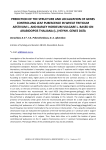Статьи журнала - Журнал стресс-физиологии и биохимии
Все статьи: 984
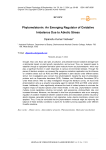
Phytomelatonin: an emerging regulator of oxidative imbalance due to abiotic stress
Статья обзорная
Drought, heat, cold, flood, salt, light, air pollution, and pesticide-induced oxidative damage have a detrimental impact on plant growth, reproduction, and survival. Thus, our research seeks to establish through a tryptophan-derivative plant molecule known as phytomelatonin, which may play a significant function in plant responses to various environmental stresses. Through the pieces of literature analysis, we reviewed the exogenous melatonin application and its influence on oxidative stress such as ROS and RNS generated in plant tissues under different abiotic stimuli. Our investigations also concern how phytomelatonin impacts the level of antioxidative proteins such as Superoxide dismutase (SOD), Catalase, and Glutathione Peroxidase (GPx) under these stimuli. After our deep investigation through the literature survey, we found that phytomelatonin acts as a powerful scavenging agent to detoxify ROS and RNS under abiotic threats. Additionally, it also significantly enhanced the level of oxidant proteins to minimize the negative impact of reactive species under these threats. In this way, phytomelatonin exhibits multiple crucial capabilities including root growth, leaf senescence, photosynthetic rate, and increased biomass. Moreover, we discussed in brief how phytomelatonin acts as an emerging regulator of oxidative imbalance between oxidative stress and antioxidative proteins induced by abiotic stresses, generated primarily in cell organelles, nuclei, plasma membrane, cytosol, and apoplast. Thus, it may be concluded that the phytomelatonin molecule might be improving the balance of these stressful conditions in plants for its better-surviving capacities under different threatful situations.
Бесплатно
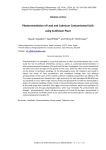
Phytoremediation of lead and cadmium contaminated soils using sunflower plant
Статья научная
Phytremediation has emerged as a practical approach to clean up metal-polluted soils. In this study the role of sunflower ( Helianthus annuus L.) plants as a potential phytoremediator to soils contaminated with cadmium (Cd) and lead (Pb) was investigated. Our results showed that the effect of Cd was stronger on the growth of the roots, while the effect of Pb was stronger on the shoots of sunflower seedlings. At the physiological level, Cd treatment was found to induce low levels of lipid peroxidation and membrane leakage with less affected photosynthesis in the leaves of the treated sunflower seedlings compared to the effects of Pb. The results presented here showed that a high amount of the total absorbed Cd (88.84%) was accumulated in roots, while a high amount of the total absorbed Pb (71.39) was tranlocated to shoots of sunflower seedlings. Similar trends of Cd and Pb allocation between roots and shoots at the yield stage were recorded. We suggest here that sunflower plants may remediate Cd contaminated soils through phytostabilization, while may remediate Pb contaminated soils through phytoextraction. Finaly, the trace amounts of Cd and Pb that were accumulated in seeds recommends sunflower plants to be used safely and economically for cleaning up soils contaminated with Cd and/or Pb.
Бесплатно
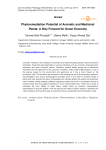
Phytoremediation potential of aromatic and medicinal plants: a way forward for green economy
Статья обзорная
Currently, interests in the cultivation of aromatic and medicinal plants gained a rapid momentum worldwide. These find great application in various industries such as; cosmetic, pharmaceutical, perfumery and other industrial sectors. Therefore, product safety issues are of paramount importance for the betterment of the consumer. Presently, heavy metal (HMs) pollution is one of the serious issues for the environment and agriculture as it has a direct impact on the production yield. This situation has worsened in the present era due to the population pressure, industrialization and various anthropogenic activities which in turn lead to oxidative stress in plants and thus disturbs the redox homeostasis and ultimate affects the quality and production yield. However, plants possess a different regulatory system that work in a synergetic manner to combat stress and thus adapts themselves in such contaminated soils. These act as sinks to neutralize the toxic effects of these heavy metals either by chelation, sequestration, intensification of enzyme system. Here we discuss the impact of heavy metals on aromatic and medicinal plants and how they play an essential role as a sustainable phytoremediation crops.
Бесплатно
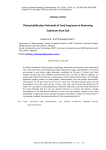
Phytostabilization potential of yard long bean in removing cadmium from soil
Статья научная
The effect of cadmium (Cd) on growth, physiology, distribution and tolerance was examined in root, shoot and leaves of yard-long bean ( Vigna unguiculata subsp. sesquipedalis L.). The seeds were grown in pot culture under laboratory conditions for 60 days in Ferriera and Davis nutrient solution with three different concentrations (0.5, 1.0 and 2.0 mM) of cadmium. Cd toxicity was evident from chlorosis in young leaves and increased concentrations of Cd brought significant negative effects on plant growth, photosynthetic rate and protein biosynthesis. Translocation of Cd was found to be more in roots than the above ground parts and the accumulation was in the order of root > shoot > leaf. Low root to shoot translocation of Cd makes the crop ideal for phytostabilization. Relatively high metal tolerance index obtained in the study indicated that the crop has greater tolerance to increase Cd exposure, though accumulation of Cd had altered thickness of root and root biomass. Owing to the crop’s adaptability to high temperature, drought conditions and ability to retain Cd in roots makes it a promising candidate for phytostabilization of soil contaminated by Cd.
Бесплатно
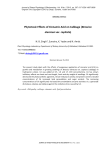
Phytotoxic effects of cinnamic acid on cabbage ( Brassica oleracea Var. capitata)
Статья научная
The present study deals with the effects of exogenous application of cinnamic acid (CA) on growth and metabolism in growing seedlings of Brassica oleracea Var. capitata (cabbage) in hydroponic culture. CA was added at 0.5, 1.0 and 1.5 mM concentrations. CA has shown inhibitory effects on shoot and root length, fresh and dry weight of seedlings. CA significantly decreased the photosynthetic pigments, nitrate reductase activity and protein content. Graded concentrations of CA increased lipid peroxidation and sugar content. The increasing concentrations of CA significantly increased the antioxidative enzymes activity viz. superoxide dismutase, catalase, peroxidase against the oxidative stress caused by CA.
Бесплатно
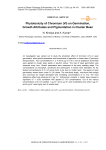
Phytotoxicity of chromium (VI) on germination, growth attributes and pigmentation in cluster bean
Статья научная
An investigation was carried out to study the phytotoxic effect of chromium (VI) on seed germination, plant growth parameters and biosynthesis of pigments in cluster bean ( Cyamopsis tetragonoloba ). Four concentrations (1, 2, 4 and 8 µg ml-1) of Cr (VI) as potassium dichromate were applied to cluster bean seeds in solution culture. The rate of seed germination was observed every hour. Growth parameters were measured at the early seedling stage. The concentrations of chlorophyll, carotenoid and anthocyanin in leaves were estimated. All the studied concentrations of Cr (VI) were found to be toxic to cluster bean. The speed of seed germination slowed down under Cr (VI) stress. The root-shoot length, root-shoot fresh weight and root-shoot dry weight decreased with increasing concentrations of Cr (VI). The most deleterious effect was observed at 8 µg ml-1. Anthocyanin contents in cluster bean showed a significant ( P -1 and 2 µg ml-1 were moderately toxic while 4 µg ml-1 and 8 µg ml-1 were highly toxic to cluster bean.
Бесплатно
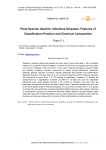
Статья научная
Species of medicinal plants are grouped into sets, each of which was used in folk or scientific medicine for a specific infectious disease. A total of 59 infections and species sets were taken into account. Increases in the occurrence, in such sets, of species belonging to certain families and species containing chemical compounds of certain groups (flavonoids, terpenoids, alkaloids, phenols, lactones, coumarins, iridoids, xanthones) were studied. The mathematical-statistical Student's t-test was used. As a rule, in the set of species used for infectious diseases, the occurrence of some (from 1 to 12) families is significantly increased. 67 families are characterized by a significantly increased occurrence in at least one such set. Significant differences were noted between families in the number of infections with which they are associated through their affinity for the sets of plants used. It was also revealed that, as a rule, in the set of species used for infectious diseases, the occurrence of certain (from 1 to 8) groups of compounds was significantly increased. Significant differences were noted between infections in combinations of groups of compounds that were reliably related to the plant species used. Information about the considered patterns can be used to assess the prospects of plant species, families, and chemical compounds in the study of their antimicrobial and antiviral activity.
Бесплатно
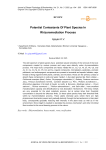
Potential contestants of plant species in rhizoremediation process
Статья обзорная
The wild spectrum of plant species have potential natural remedies of the removal of the toxic components created by various process and ways were detoxify under rhyzoremediation process. The major toxic components are heavy metals like Cr, Cu, Co, Ni, Zn, Pb, Cd, and As. Cr, Cu, Co, Ni, Zn, Pb, Cd, and As, organic compounds, microplastics, pesticides, aromatic pollutants, and anthropogenic components are present in terrestrial and aquatic habitats, major threats to living organisms like plants, animals, and microbes. Roots are the primary contact to absorb these components in soils and water medium. A few plant species like Pteris vittata L., Eichhornia crassipes (Mart.) Solms, Chrysopogon zizanioides (L.) Roberty, Panicum maximum Jacq ., Festuca arundinacea Schreb., Cynodon dactylon (L.) Pers., Phalaris arundinacea L., Miscanthus giganteus J.M.Greef & Deuter ex Hodk. & Renvoize, Medicago sativa L., Pisum sativum L., Ricinus communis L., Trifolium alexandrinum L., and Salix alba L. have excellent rhizoabsorption capacity and detoxification by root absorption mechanisms. The heavy metals are very essential for the plant metabolic process, but at certain times their threshold concentration is beyond the tolerance limits. So these plant species keep their threshold limit within by rhizoremediation process. These plants intensely grow where there are high phytotoxicant chemicals present and gradually detoxify through the biomechanism in their plant body, consequently gradually reducing their intensity in the plant body as well as in the environment. More insight is needed to elucidate the precious mechanism and other microbial flora involved in this novel cleaning process in the nature.
Бесплатно
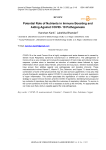
Potential role of nutrients in immune boosting and aiding against COVID- 19 pathogenesis
Статья обзорная
COVID-19 or the novel Corona Virus is highly contagious and acute disease and is caused by Severe Acute Respiratory Syndrome Coronavirus-2 or SARS-CoV-2. The pathogenesis of Corona Virus is very complex and involves the suppression of host innate and antiviral immune response, cytokine storm is described as induction of oxidative stress followed by hyper inflammation which causes tissue fibrosis, pneumonia and lung injury. Several neutraceuticals have proven their abilities against viral pathogenesis and boosting immunity. These neutraceuticals involves Vitamin C, Vitamin D, Zinc, Selenium, and Copper. To boost immunity, combination of some of the phytonutrients may be used as food supplements. It may also help provide therapeutic assistance against COVID-19, preventing spread of virus and suppression of hyper inflammation. This review speculates the significance of nutrition as a mitigation strategy to support immune function amid the COVID-19 pandemic, identifying food groups and key nutrients of importance that may affect the outcomes of respiratory infections. To survive in the current conditions of COVID-19 it is necessary to build up the immunity. An appropriate diet can make sure that a body is capable against the viral pathogenesis.
Бесплатно
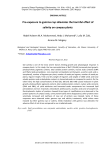
Pre-exposure to gamma rays alleviates the harmful effect of salinity on cowpea plants
Статья научная
Soil salinity is one of the most severe factors limiting growth and physiological response in cowpea plants. In this study, the low concentrations of NaCl (25mM) increased plant growth, photosynthetic pigments content, total soluble protein content, nucleic acids contents (DNA and RNA), lipid peroxidation, non enzymatic antioxidants (anthocyanin, ascorbic acids and α-tocopherol), number of legumes per plant, number of seeds per legume, number of seeds per plants, legume length, fresh and dry weight of legumes and weight of 1000 seeds and total soluble proteins and carbohydrate contents in harvested seeds as compared to control. On the other hand, the high concentrations of NaCl (50, 100 and 200 mM) caused reduction in plant growth, photosynthetic pigments content, total soluble protein content, nucleic acids contents (DNA and RNA), all yield attributes and harvested seeds components but increased lipid peroxidation and non enzymatic antioxidants (anthocyanin, ascorbic acids and α-tocopherol). Electrophoretic studies of proteins showed three types of modifications are observed in the protein patterns of cowpea seeds, some protein bands were disappeared, other proteins were selectively increased and synthesis of new set of protein was induced. Some of these responses were observed under gamma rays and salinity treatments, while others were induced by either gamma rays or salinity. Seeds irradiation with gamma rays alleviates the adverse effect of salt stress compared to non irradiated seeds.
Бесплатно
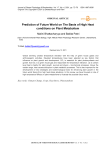
Prediction of Future World on The Basis of High Heat conditions on Plant Metabolism
Статья научная
Global warming creates temperature elevation with the help of green house gases and anthropogenic activities. Elevated temperatures have been selected as key factors that influence on plant growth and development. CO2 is essential for plant photosynthesis and growth. But CO2 is a green house gas and responsible for temperature elevation. Up to certain level heat is helpful for plant growth, survival and physio – biochemical processes. Above the certain range, heat causes disruption in plant metabolic processes. This is also important for the development of new strategies and biotechnological tools for enhancing plant growth in the future world facing from high heat stress situations. In this review, we have focused on role of high temperature effects on plant metabolisms to illustrate the possible future world.
Бесплатно
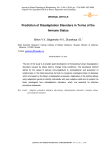
Prediction of disadaptation disorders in terms of the immune status
Статья научная
The aim of the study is to enable rapid development of forecasting human disadaptation disorders caused by stress factors change living conditions. The developed method allows for the values of salivary immunoglobulin A, ceruloplasmin and proportion of lymphocytes in the blood leukocyte formula to recognize nosological class of diseases which are based on the failure of adaptation processes. Application of the method allows early adaptation period to identify individuals with poor adaptive skills and to predict the likely nosological form disadaptation disorders, which are essential for effective preventive measures.
Бесплатно
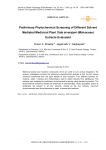
Статья научная
Medicinal plants have bioactive compounds which are used to cure various diseases.In the present investigation involves the preliminary phytochemical analysis to find out the various chemical constituents from the plant sample of Sida sivarajani . Four different solvents viz. Acetone, water, n-hexane and methanolwere used to obtain extracts from plantleaves. The extracts were subjected to preliminary phytochemical screening using standard procedure. The phytochemical screening reveals the presences of carbohydrates, cardic glycosides; phenol & terpenoids are present in all four solvents. Among all the four extracts, maximum phytochemicals were found dissolved in water, n-hexane and methanol.
Бесплатно

Preparation and characterization of renewable bio-polyol from the edible seed oil
Статья научная
Polyol is an organic compound containing multiple hydroxyl groups. This study looked at the possibility of using an edible oil extract from Salvia hispanica seeds as a sustainable source for polyols and, eventually, biodiesel or polyurethane. For this, a combination of hydrogen peroxide and acetic acid was used to create new polyol from the aforementioned oil in one-step synthesis. Standard techniques such as physicochemical analysis, phytochemical and basic radical identification, FTIR and NMR were used to characterize the polyol derivative that was extracted from the oil. Antimicrobial activity of both oil and polyol were tested against certain bacteria and fungi. Spectral analysis demonstrated the formation of polyol and this result indicated the possible of using Salvia hispanica polyol as a raw material for the preparation of bio-polymers.
Бесплатно

Статья научная
Seeds vigour and uniform germination across diverse environmental conditions is a primary objective in agriculture. Moisture and temperature are key factors affecting cotton seed quality during storage, where maintenance is rather difficult during long-term storage. To investigate the potential influence of UV radiation on enhancing cotton seed vigour after long-term storage, Deir Al-Zour 22 cotton variety was selected due to its reduced-vigour by time and its low germination rates. Germination rates of cotton seeds exposed to combined UV-A, B and C irradiation for different periods of time (4, 8, 12, and 16 min) were enhanced compared to non-irradiated seeds. Data showed improved growth of generated seedlings on PEG and NaCl supplemented media. Results showed no major changes on the expression of GA3ox1 gene, whereas, two stress-related genes DEH and VPP were temporarily activated after treatment with UV-irradiation supporting their function as scavenging and accumulating factors of ROS, a typical by-product of the photo-excitation under UV. Our results suggest the possibility of using combined UV-A, B and C radiation as a physical priming agent of cotton seeds to induce plant vigor and enhance germination under stress conditions without affecting normal growth.
Бесплатно
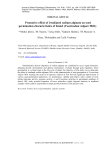
Статья научная
Radiolytically derived oligomers of sodium alginate are considered to act as signal molecules, affecting growth, development and defense mechanisms of plants through gene regulation. Since germination is a critical stage in the life cycle of plants, the objective of this study was to determine the effect of irradiated sodium alginate (ISA) on the characteristics of seed germination of Foeniculum vulgare Mill. Soaking the seeds in an aqueous solution of ISA showed significant improvement in various seed germination parameters, viz. germination, viability and relative water content of seed, nitrate reductase activity, protease activity, α and β amylase activities in germinated seedlings of fennel. GPC study revealed formation of lower molecular weight oligomer fractions in irradiated samples which could be responsible for plant growth promotion in the present work.
Бесплатно
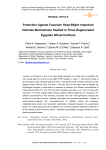
Статья научная
Fusarium graminearum is one of the major global pathogens of cereals and is considered the main causal agent of Fusarium head blight (FHB) disease in wheat. F. graminearum leads to severe losses in grain yield and quality of wheat. In the present study, immature embryos of three Egyptian wheat cultivars (Giza 164, Sids 1 and Bani Suef 6) have been used to highlight the physiological changes in wheat plants in response to treatment with different concentrations of Fugal Culture Filtrate (5%, 10%, 20% and 40%). Samples were taken at 5, 10 and 15 days after inoculation. The three studied wheat cultivars exhibited different responses for inoculation with different concentrations of FCF. However, inoculation with 20% FCF significantly increased the activities of antioxidant enzymes (catalase, peroxidase and ascorbate peroxidase) in shoots of wheat cultivars compared with uninoculated ones. In addition, proline and secondary metabolites (total phenol and flavonoids) significantly increased throughout the experimental period. Our results also proved that in addition to the common protective mechanisms detected in all the infected cultivars there are cultivar - dependent physiological changes exhibited by wheat plant during abiotic stress.
Бесплатно
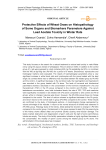
Статья научная
This study focuses on the search for a natural treatment to reduce lead toxicity in male Wistar rat by using the aquous extract of wheatgrass Triticum aestivum (WG). In addition to the control group (C), rats were exposed to a diet containing 600 mg Pb acetate/Kg diet (Pb), or combined with the WG at 9g/100g diet (Pb-WG) for a period of 6 weeks. Biochemical, reproductive and histological markers were evaluated. The results of haematological parameters show a very significant increase in white blood cells and lymphocytes with the group treated with the lead single. By contrast there was no difference was recorded between the treated group by Pb-WG and the control. A significant decrease in the red blood cells, the haemoglobin and haematocrit was recorded in the group treated with Pb alone. The tests of hormonal and biochemical parameters showed a decrease in the concentration of the hormone triiodothyronin (T3) and thyreostimulin (TSH) in the Pb group compared to the (control and Pb-WG). The serum testosterone concentration, urea, total cholesterol levels, the rate of TGP, TGO and creatinine were significantly increased in rats treated with (Pb) alone compared to (the control and Pb-bl group), while no change in glucose was shown. However, the (Pb-WG) group shows no change compared to the control. The level of calcium showed a significant decrease in the Pb group, and which returns to the normal state in group (Pb-WG) compared to the control. These results are confirmed by the study of histological sections. A morphological change represented by volume shrinkage of the vesicles. A return to the normal structure of follicles was observed in (Pb-WG) group. Histology study of the kidney, testis epididymis showed no change in (Pb-WG) compared to the control group. Contairement in the group exposed to lead (Pb) the parenchyma of the kidney shows dilated distal and proximal tubules causing renal tubular damage. The testes marked destruction and degeneration of germ cells and the light of some seminiferous tubules are empty. The study of the fertility parameters indicates a highly significant decrease in the concentration, the mobility of sperm counts among the treated group by Pb alone. The administration of the wheat grass has increased.
Бесплатно
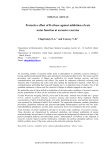
Protective effect of d-ribose against inhibition of rats testes function at excessive exercise
Статья научная
An increasing number of research studies point to participation in endurance exercise training as having significant detrimental effects upon reproductive hormonal profiles in men. The means used for prevention and correction of fatigue are ineffective for sexual function recovery and have contraindications and numerous side effects. The search for substances effectively restoring body functions after overtraining and at the same time sparing the reproductive function, which have no contraindications precluding their long and frequent use, is an important trend of studies. One of the candidate substances is ribose used for correction of fatigue in athletes engaged in some sports. We studied the role of ribose deficit in metabolism of the testes under conditions of excessive exercise and the potentialities of ribose use for restoration of the endocrine function of these organs. 45 male Wistar rats weighing 240±20 g were used in this study. Animals were divided into 3 groups (n=15): control; excessive exercise; excessive exercise and received ribose treatment. Plasma concentrations of lactic, β-hydroxybutyric, uric acids, luteinizing hormone, total and free testosterone were measured by biochemical and ELISA methods. The superoxide dismutase, catalase, glutathione peroxidase, glutathione reductase and glucose-6-phosphate dehydrogenase activities and uric acids, malondialdehyde, glutathione, ascorbic acids, testosterone levels were estimated in the testes sample. Acute disorders of purine metabolism develop in rat testes under conditions of excessive exercise. These disorders are characterized by enhanced catabolism and reduced reutilization of purine mononucleotides and activation of oxidative stress against the background of reduced activities of the pentose phosphate pathway and antioxidant system. Administration of D-ribose to rats subjected to excessive exercise improves purine reutilization, stimulates the pentose phosphate pathway work, inhibits oxidative stress of the testes, and saves the testicular endocrine function.
Бесплатно

